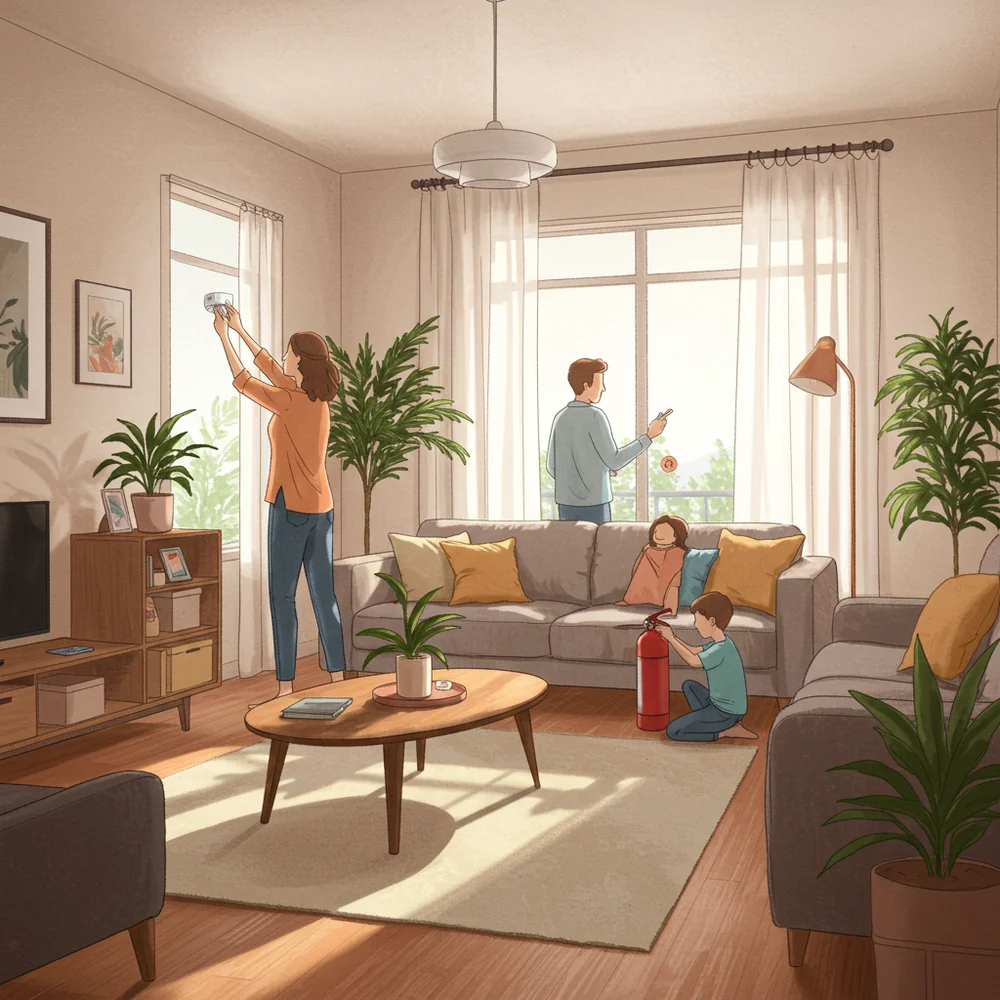
Home Safety Checklist: Fire, Electrical & Emergency Readiness
Home Safety Checklist
Complete home safety checklist covering all essential safety measures including fire and smoke detection, electrical safety, trip hazard prevention, kitchen and bathroom safety, child protection, structural maintenance, and emergency preparedness to ensure a secure and safe home environment.
1. Fire & Smoke / Carbon Monoxide Safety
2. Electrical & Lighting Safety
3. Floor, Stairs & Trip Hazards
4. Kitchen Safety
5. Bathroom Safety
6. Bedroom & Sleep Areas
7. Child & Pet Safety (if applicable)
8. Structural, Exterior & Yard Safety
9. Utilities, HVAC & Plumbing Safety
10. Emergency Preparedness & General Safety
Overall Progress
0% complete
Checklist Progress
0% complete - Ready to download!
Related Checklists
Explore more checklists in the Safety Checklists category
Complete Lawn Mower Safety Checklist for Homeowners
Comprehensive lawn mower safety checklist covering pre-operation, operation, maintenance, and emergency procedures for safe mowing.
Surgical Safety Checklist for Healthcare Teams
Comprehensive surgical safety checklist covering pre-operative preparation, anesthesia planning, equipment verification, and postoperative care for patient safety.
Warehouse Safety Checklist PDF: Facility & Worker Protection
Comprehensive warehouse safety assessment covering facility conditions, material handling, equipment safety, and emergency preparedness.
Complete Boat Safety Gear and Equipment Checklist
Comprehensive boat safety equipment checklist ensuring compliance, preparedness, and protection on the water with required gear, emergency tools, and navigation essentials.
Car Seat Safety Checklist for Parents
Comprehensive car seat safety checklist to ensure correct selection, installation, harnessing, and daily inspection for your child’s safe travels.
Popular Categories
Most downloaded checklist categories
Assessment Checklists
Streamline evaluations with detailed assessment checklists. Ensure accuracy, consistency, and efficiency in academic, workplace, and project reviews.
Car Checklists
Find essential car checklists for maintenance, safety, road trips, and inspections. Stay prepared and keep your vehicle in top shape.
Home Checklists
Explore home checklists for cleaning, organization, safety, and maintenance. Keep your home efficient, safe, and clutter-free.
Wedding Checklists
Plan your big day with wedding checklists covering planning, budget, guests, and timeline. Stay organized from start to finish.
Safety Checklists
Stay safe with checklists for workplace, home, and emergency preparedness. Reduce risks and stay ready for any situation.
Inspection Checklists
Browse inspection checklists for business, home, safety, and compliance. Ensure quality, accuracy, and preparedness every time.



